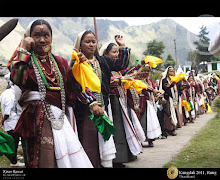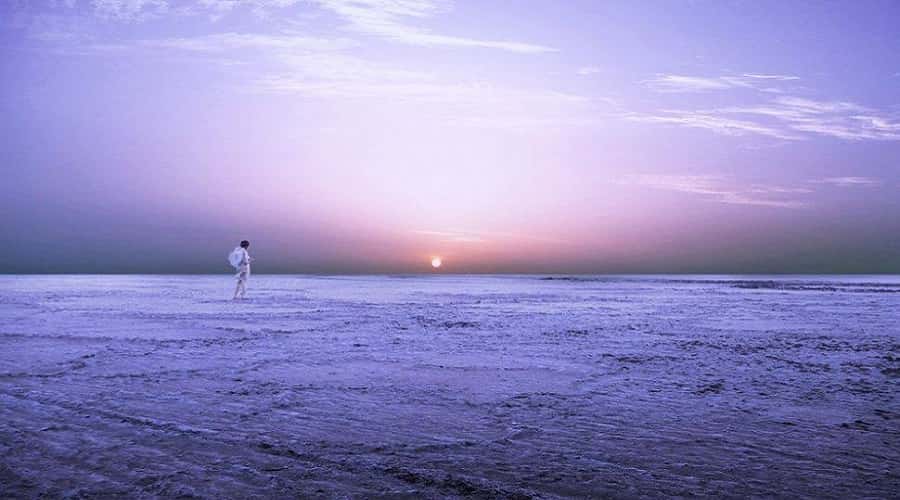India has never fallen short when it comes to the number of temples that serve the devotees living in a specific region. Some temples go beyond the purpose of serving the religious and spiritual pursuits of the people and attain the status of being a historical monument because their existence, appearance and location make them a landmark structure. Having attained the designation of a historical monument, the appeal of these sites increases manifold and so does the number of visitors who want to break the chain of events of their routine life by exploring an interesting tourist spot. A suggestion for the people who want to visit a glorious historical temple in India is the Dwarkadheesh Temple of Gujarat.
It is said that the temple is as old as the city of Dwarka, which was known as the Kingdom of Dwarka ruled by Lord Krishna. The city is located at the bank of Gomati River. The temple is considered to be one of the four holy seats or Chaar Dhaam (Badrinath, Dwarka, Puri and Rameswaram), as it is called in India. It attained this status after one of the prominent reformers of the eight century named Adi Shankaracharya paid a visit to this temple.
The original temple was built by the grandson of Lord Krishna, Vajranabha, while the temple that exists today had been constructed in the sixteenth century.
There are 60 pillars inside the temple that depict the various dynasties that once ruled over Dwarka. Along with these pillars are beautiful sculptures. The statue of Lord Krishna that we see today has been carved in a black stone. To protect this statue, an idol was imported from a temple dedicated to Lord Krishna’s wife Rukmini while the original statue was kept hidden.
The spire of the temple stands at a height of 78.3 metres, while 72 pillars support this five-storey structure. It has been made with limestone. A flag hoisted above the temple is changed five times every day.
The flag or the Dhwaj ji, as it is called, is made of a cloth measuring 52 yards. This flag is a collective of 52 small flags, each representing a Yadav who handled a specific department in the administration of Dwarka Kingdom. The flag carries a symbol of sun and moon. Another legend goes that these 52 flags are a representative of 50 doors that were used as entry and exit points for the Dwarka city, along with the two doors of the temple itself.
Inside the temple is a large hall, where devotees still gather for worshiping. The entrance gate of the temple called The Moksha (Salvation) Dwaar is built towards the north, whereas the gate built at the south of the temple is called Swarga Dwar (Gateway to Heaven). This gate will take you to the Gomti River through a series of 56 steps.
The temple is now administered by the state government. A committee has been established to manage the events and services of the temple. Various excavations led near the temple premises by the archeology department have provided several artifacts to the government.
The funds for the maintenance of the temple are raised through donations.
Tulsi Vivah is another important festival during which thousands of devotees gather at the temple. All other major Hindu festivals and days such as Holi, Akshaya Tritiya, Ashadh, Bhadrapada, Kali Chaudas, Deepawali, etc., are celebrated here with enthusiasm, making the trip of a visitor more memorable than ever.
Close to the temple is the Bet Dwarka, where there is a temple complex, a lake, and a Baithak (seat) of religious importance. It is only 30 kilometres away from the temple and is surrounded by sea and is a solitary heaven.
The rail network connects Dwarka to many cities of the state and to nearby and far off states as well.
The closest airport to the Dwarka city is at Jamnagar, which is a domestic airport.
A visit to the Dwarkadheesh Temple will give you a deeper insight into the architectural style of the Chalukya, the significance of Lord Krishna, and the beauty of the sculptures and carvings of the ancient period.
 |
| Pious Gomti river at Dwarka Temple [Source] |
Location
The famous Dwarkadhish Temple is in the city of Dwarka, one of the seven holiest places of India in the state of Gujarat.History
The temple is named after the city where it is located. The second part of the name of the temple, Adheesh, translates to the Lord.It is said that the temple is as old as the city of Dwarka, which was known as the Kingdom of Dwarka ruled by Lord Krishna. The city is located at the bank of Gomati River. The temple is considered to be one of the four holy seats or Chaar Dhaam (Badrinath, Dwarka, Puri and Rameswaram), as it is called in India. It attained this status after one of the prominent reformers of the eight century named Adi Shankaracharya paid a visit to this temple.
The original temple was built by the grandson of Lord Krishna, Vajranabha, while the temple that exists today had been constructed in the sixteenth century.
Structure
The present day temple is an example of the Chalukyan architectural style. The height of the temple is 51.8 metres with two peaks. The statue of Lord Krishna is placed at the longer peak, known as the Nij Shikhar. This is the main shrine of the temple, which is also called the Jagat Mandir.There are 60 pillars inside the temple that depict the various dynasties that once ruled over Dwarka. Along with these pillars are beautiful sculptures. The statue of Lord Krishna that we see today has been carved in a black stone. To protect this statue, an idol was imported from a temple dedicated to Lord Krishna’s wife Rukmini while the original statue was kept hidden.
 |
| Dwarkadhish Sunset [source] |
The flag or the Dhwaj ji, as it is called, is made of a cloth measuring 52 yards. This flag is a collective of 52 small flags, each representing a Yadav who handled a specific department in the administration of Dwarka Kingdom. The flag carries a symbol of sun and moon. Another legend goes that these 52 flags are a representative of 50 doors that were used as entry and exit points for the Dwarka city, along with the two doors of the temple itself.
Inside the temple is a large hall, where devotees still gather for worshiping. The entrance gate of the temple called The Moksha (Salvation) Dwaar is built towards the north, whereas the gate built at the south of the temple is called Swarga Dwar (Gateway to Heaven). This gate will take you to the Gomti River through a series of 56 steps.
The temple is now administered by the state government. A committee has been established to manage the events and services of the temple. Various excavations led near the temple premises by the archeology department have provided several artifacts to the government.
The funds for the maintenance of the temple are raised through donations.
What to See
Being a place of religious importance, the temple remains open on all days of the year. Various festivals are celebrated according to the Hindu calendar. Annakut Utsav is celebrated on the New Year day according to the calendar. The festival and the statue is beautifully decorated on this day. |
| Swarga Dwaar (Gateway to Heaven), entrance to the Dwarakadheesh Temple [source] |
Close to the temple is the Bet Dwarka, where there is a temple complex, a lake, and a Baithak (seat) of religious importance. It is only 30 kilometres away from the temple and is surrounded by sea and is a solitary heaven.
Where to Stay
As you visit Dwarka, you can opt to stay at one of the several Dharamshala and rest houses located close to the temple. There are several private lodges and hotels as well that serve meals and provide rooms according to your requirements.Best Time to Visit
The temple is open from 07:00 am to 12:30 pm and from 05:00 pm to 09:30 pm.How to Reach
The city of Dwarka is well connected to the neighboring cities and other parts of the state through road network. Direct buses and private taxis are available.The rail network connects Dwarka to many cities of the state and to nearby and far off states as well.
The closest airport to the Dwarka city is at Jamnagar, which is a domestic airport.
A visit to the Dwarkadheesh Temple will give you a deeper insight into the architectural style of the Chalukya, the significance of Lord Krishna, and the beauty of the sculptures and carvings of the ancient period.





Ultimate Guid for Dwarka| Dwarkadhish: Kingdom Of Krishna
ReplyDeleteDwarka| Dwarkadhish: Kingdom Of Krishna |Maa Rukmini मंदिर| Gujarat| संपूर्ण जानकारी| Day-2
If you are planning to visit gujrat don't miss to visit Dwarkadhish